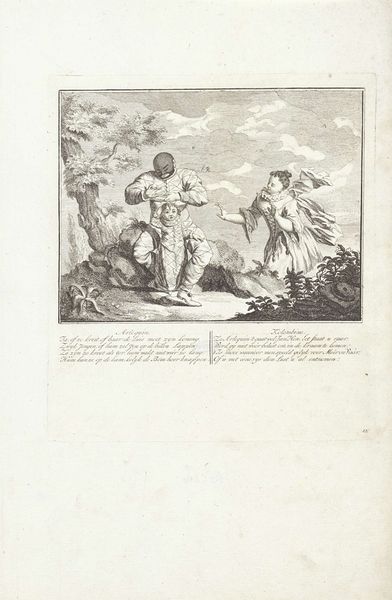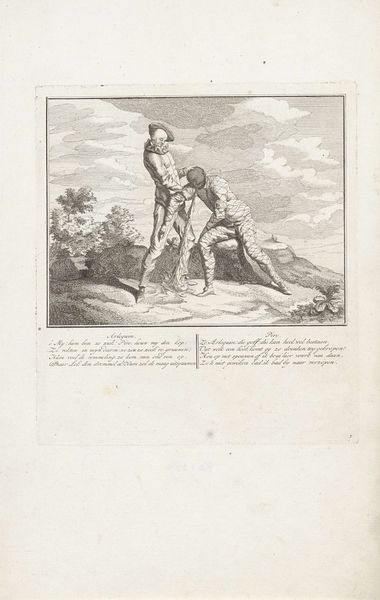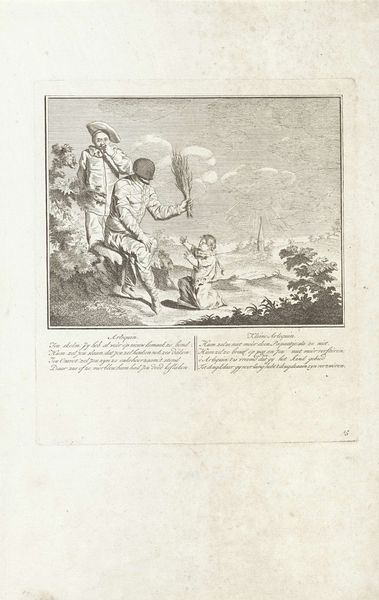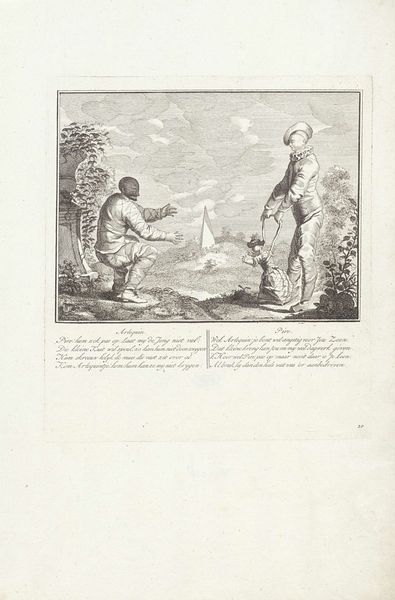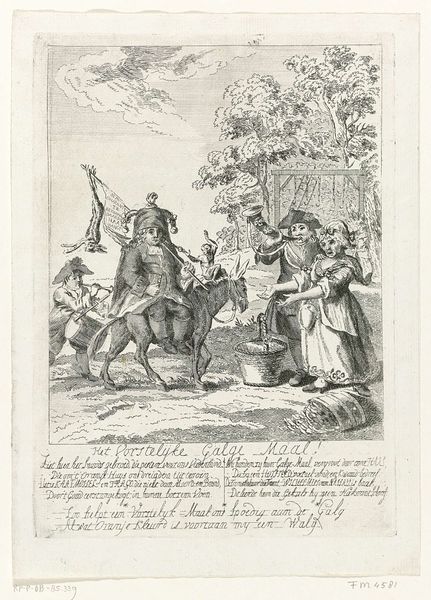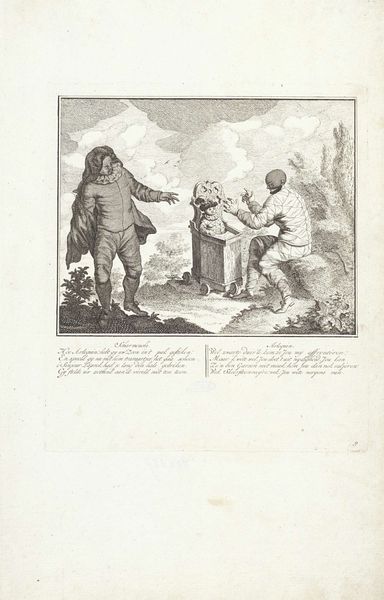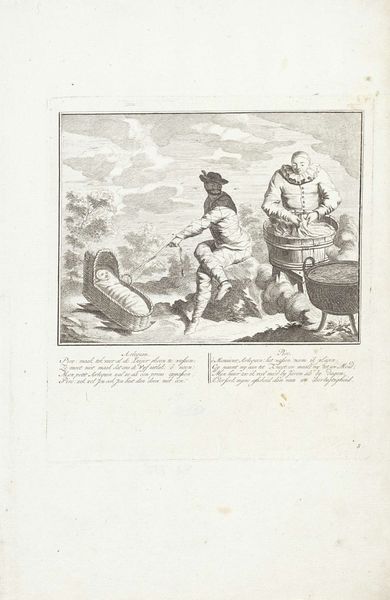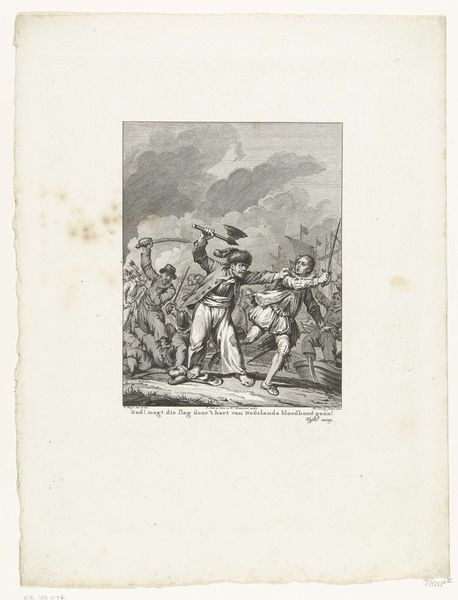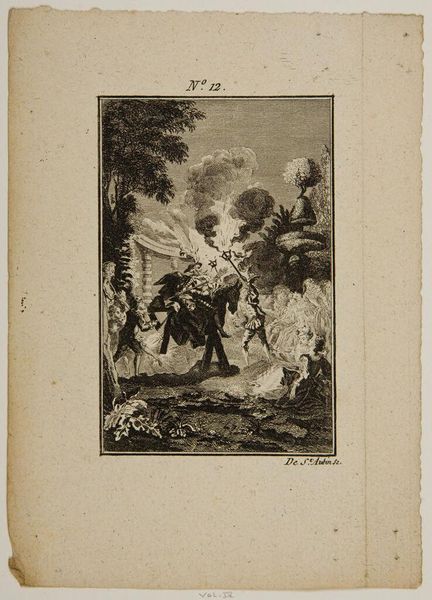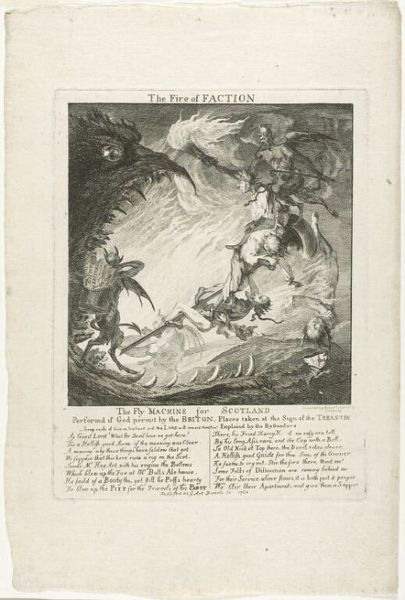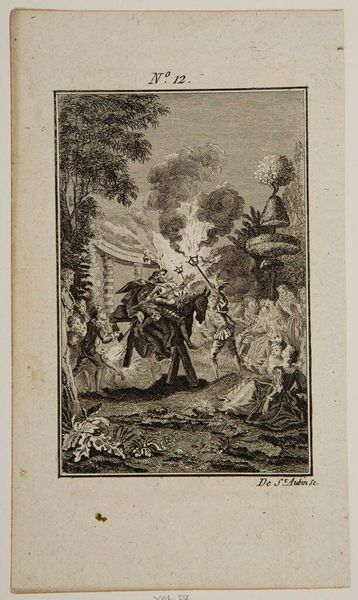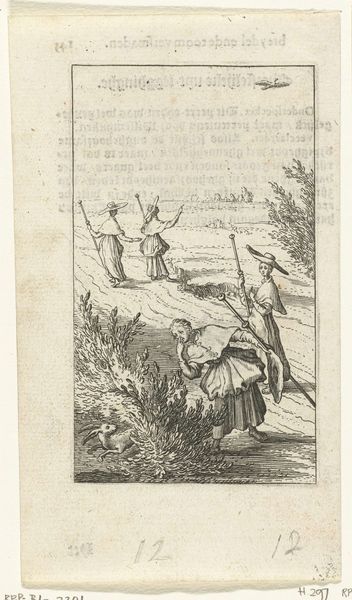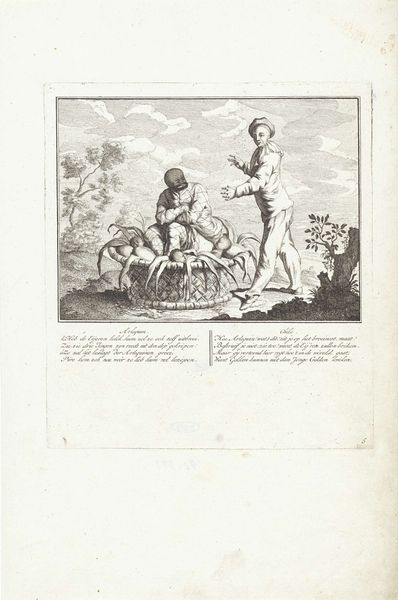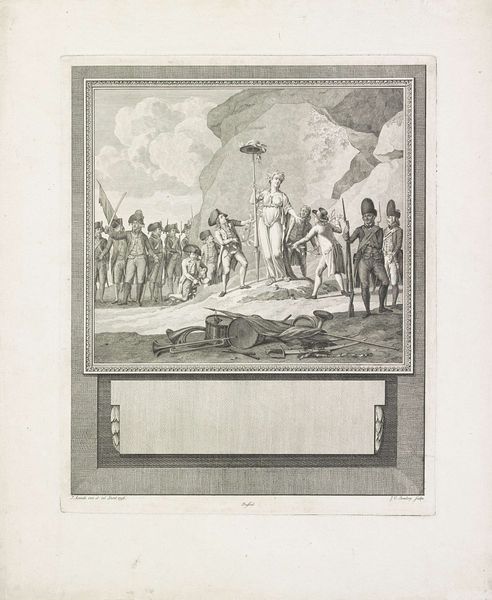
print, engraving
#
narrative-art
#
baroque
# print
#
old engraving style
#
figuration
#
line
#
genre-painting
#
engraving
Dimensions: height 233 mm, width 207 mm
Copyright: Rijks Museum: Open Domain
Curator: Here we have a look into the 18th century with "Harlequin Giving His Child a Spanking," an engraving dating from approximately 1720 to 1728. Editor: It certainly grabs your attention, doesn't it? The high contrast and somewhat chaotic composition, with all those dynamic lines, creates an unsettling, frenzied energy. Curator: The scene portrays a domestic drama: Harlequin, recognizable by his distinctive checkered costume, brandishes a bundle of sticks to discipline his child. Notice Colombine's theatrical gestures as she seemingly attempts to intervene. The materiality of the engraving itself, created by an anonymous artist, is integral—each carefully etched line forming the image. Consider how this reproducible medium disseminated ideas and societal values around parental discipline at the time. Editor: Absolutely, and what values are those exactly? Because on its surface this imagery appears pretty damning! I find myself instantly asking how the social and political realities of the era shaped expectations around parental rights and the accepted violence within the family unit. Were there different implications for wealthy versus working class families, or did it matter? How would women of that time react? Curator: Interesting questions. Given the proliferation of prints like this one, it's reasonable to assume it speaks to the anxieties and norms circulating among the print-consuming classes. The method of printmaking is crucial too: copper engraving required specialized skill, therefore situating its production firmly within a context of workshop practice and market exchange. This labor underpinned the reproduction and distribution of this familial snapshot. Editor: And how do we interpret this specific 'snapshot'? It's tempting to condemn such explicit violence outright. Still, we need to historicize those assumptions. The work is valuable not just for the craft involved, but as a lens into that culture’s power dynamics. It begs for close reading regarding gender roles, and the era's troubling relationship between authority and domestic abuse. Curator: Indeed, viewing the artwork from these differing angles allows for a much deeper connection with history, socially and materially. Editor: Ultimately, by examining not just the ‘what’ but the ‘why’ behind this scene of apparent discord, we open it to new modes of cultural reflection and insight.
Comments
No comments
Be the first to comment and join the conversation on the ultimate creative platform.
